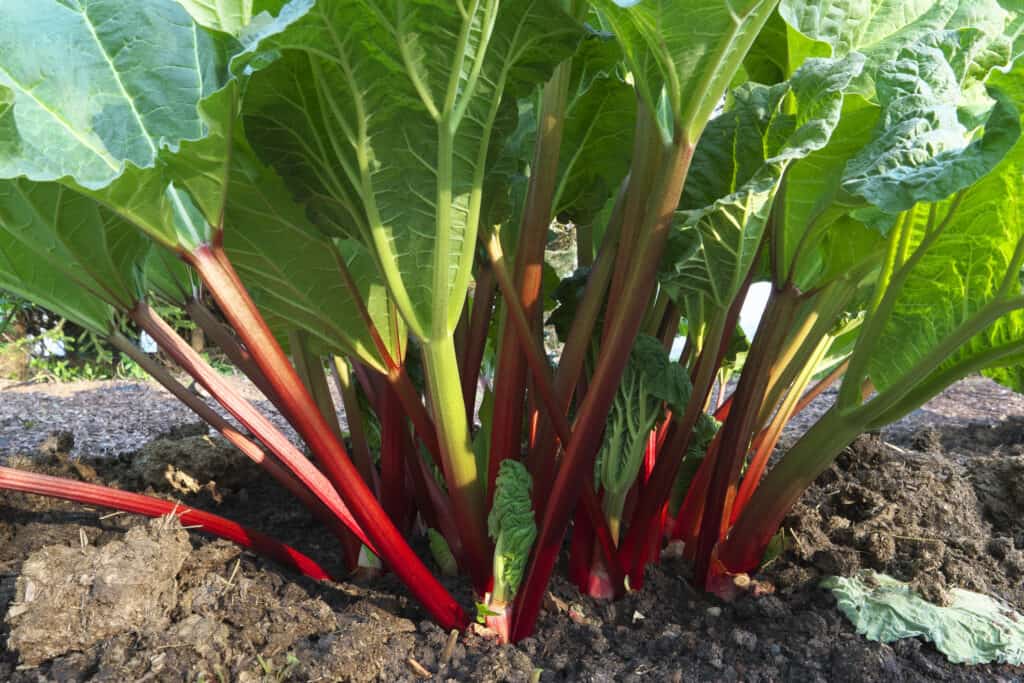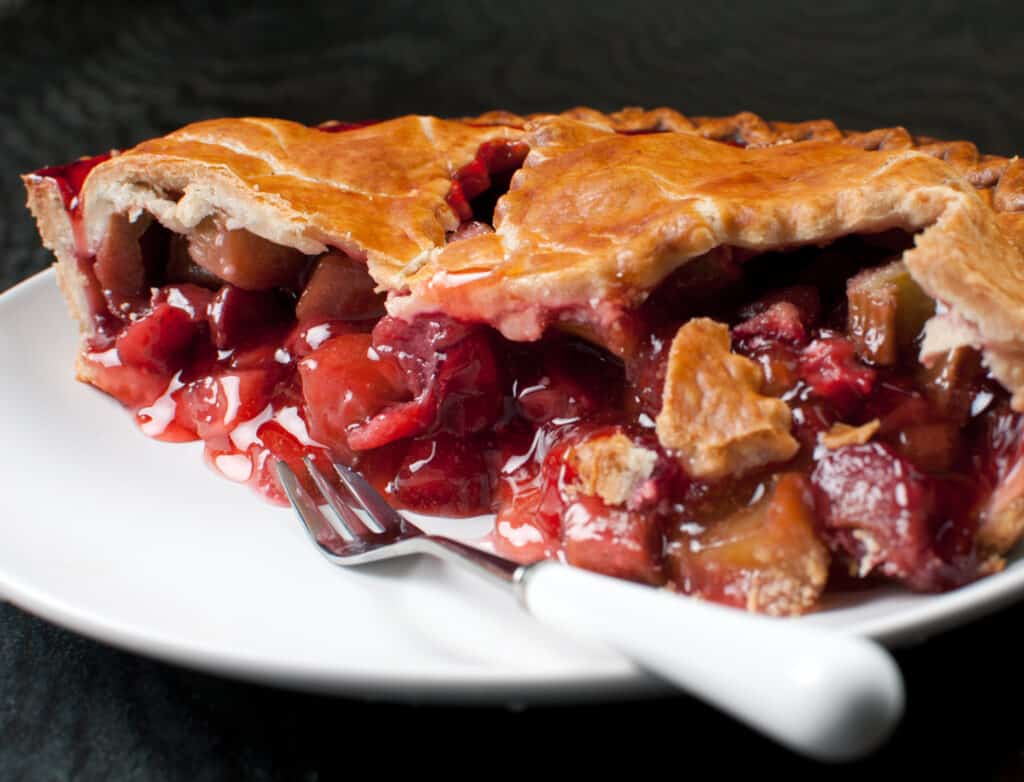The fleshy, edible petioles of species in the family Polygonaceae, a member of the genus Rheum, are known as rhubarb. The entire plant, a herbaceous perennial with short, thick root systems, makes up the rhubarb. The small blooms are housed in broad compound florets with leaves that vary in color from rose-red to greenish-white. Due to the abundance of oxalic acid and anthrone glycoside, the enormous, triangular leaves cannot be consumed. Culinary rhubarb, which is frequently hybridized, was developed by using open-pollinated seed, making it practically impossible to determine its precise ancestry.
Since rhubarb is not as frequently used in recipes as other fruits and vegetables, many people typically have no idea what it is. Is rhubarb a fruit or a vegetable? This is a subject that will be addressed in this article. Additionally, we will investigate its uses in more detail.

iStock.com/veger
Rhubarb is a Vegetable – Here’s Why
Technically, rhubarb is a vegetable. It’s the stems of the Rheum rhabarbarum plant. Veggies are the edible leaves, stalks, or stems of a plant. The plant does produce a certain form of fruit; however, it is tiny and not particularly tasty. Humans can only eat the stalks of the rhubarb plant, making it a vegetable. Despite being a vegetable by botanical definitions, it is frequently eaten in fruit-like ways!
Rhubarb is Often Used Like a Fruit – Here’s Why
Rhubarb is a vegetable, yet it’s commonly used in dishes that call for fruit. The flavor of rhubarb is extremely tart and slightly sour. Its flavor is frequently compared by many individuals to a blend of tart fruits including raspberries, blackberries, and others. Due to its powerful flavor, it is practically never consumed on its own; instead, it is paired with fruits to provide a counterbalance and enhance its flavor. The leaf stalks are most often used in crumbles, pies, and other desserts after being cooked with sugar.
How Rhubarb is Used in the Kitchen
Rhubarb can be used in savory dishes, but it is most typically simmered with sugar or cooked in pies and pastries. One well-known recipe is the strawberry rhubarb pie. In North America and Europe, the stalks are usually cut into bits and cooked with extra sugar until soft. The resulting compote is thickened with cornstarch and can then be used in pies, crumbles, and tarts. Jams can also be created by combining more sugar and pectin. Ginger is frequently used with other spices, like nutmeg and cinnamon to complement its flavor in desserts.

iStock.com/razmarinka
Some Health Benefits of the Rhubarb
Rhubarb is actually much more than just a dessert ingredient; it also has some major nutritional advantages. For example, rhubarb includes a respectable amount of fiber—around 2 grams per cup, chopped—like many fruits and vegetables. Of course, fiber is excellent for your digestive system and is said to reduce blood cholesterol levels. Phenolic acid, an antioxidant also present in red cabbage, cherries, red wine, and green tea that promotes healthy skin and shields the body from free radical damage, is abundant in rhubarb.
Rhubarb also possesses anthocyanins, a flavonoid that is rich in antioxidants. Anthocyanins have anti-inflammatory and anti-carcinogenic activity, and can also contribute to cardiovascular disease prevention, weight control, and diabetes alleviation.
Vitamin K, which is said to help blood clotting and bone health, is abundant in rhubarb as well. Rhubarb also contains vitamin A, which may aid to protect your skin from free radicals that damage it and promote premature aging by fighting them. Additionally, it contains a lot of essential vitamins and minerals, including antioxidants, which have many health advantages.

Marika Kosheleva/Shutterstock.com
A Bit More About Rhubarb
Rhubarb stalks are referred to as “crimson stalks” in poetry. Although crimson red is usually associated with rhubarb, it can be light pink with speckles or plain light green, among other colors. The color varies depending on the variety of rhubarb utilized and the production process. Color has nothing to do with how well it will cook through.
The leaves of rhubarb should not be consumed. Oxalic acid, which is found in large quantities in rhubarb leaves and may be harmful if consumed in excess, can have negative health effects. Milder gastrointestinal symptoms as well as more serious issues like renal failure and kidney stones are signs of oxalic acid poisoning. Because it could be loaded with oxalic acid, which might migrate from the leaves and make you sick, you shouldn’t eat badly cold-damaged rhubarb either. As a precaution, these field-grown plants should only be grown until the end of the summer.
Up Next
- Is A Banana A Fruit Or Vegetable? Here’s Why
- Is A Zucchini A Fruit Or Vegetable? Here’s Why
- Is Pineapple A Fruit Or Vegetable? Here’s Why
The post Is Rhubarb a Fruit or Vegetable? Here’s Why appeared first on AZ Animals.
from Animal News, Facts, Rankings, and More! - AZ Animals https://ift.tt/0yKXrdB